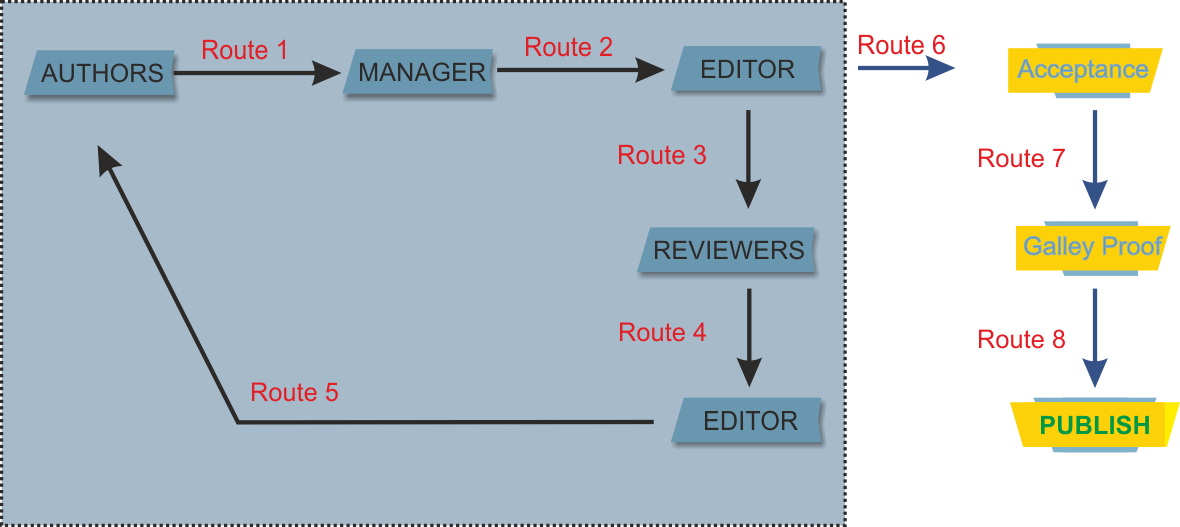Author Guidelines Peer Review Editorial Team Focus and Scope Publication Ethics Copyright Notice Author(s) Fee Plagiarism Policy Statistics
Review Process and Policy
Editor in Chief will assign the manuscript to a corresponding Editor or Managing Editor for further handling. The Editor or Managing Editor will request at least two scientists to review the research article manuscript. All manuscripts are subject to single-blind peer review whose reviewers' identities will remain anonymous to the authors and are expected to meet standards of academic excellence. Reviewers are aware of the identity of the authors, but authors are unaware of the identity of reviewers.
Detailed information about the flow for the manuscript submission (author) to the acceptance by the editor is shown in the following figure.

In short, the steps are:
- Manuscript Submission (by author) (route 1)
- Manuscript Check and Selection (by manager and editors) (route 2). Forest and Society carries out a preliminary evaluation to determine the general suitability of the manuscripts submitted to the journal. An Editor decision will be communicated to you approximately 30-60 days after submission. With the online journal management system that we are using, the author will be able to track its progress through the editorial process. Editors have a right to directly accept, reject, or review. Prior to further processing steps, plagiarism check using turtitin is applied for each manuscript.
- Manuscript Reviewing Process (by reviewers) (route 3-4)
- Notification of Manuscript Acceptance, Revision, or Rejection (by editor to author based on reviewers comments) (route 5)
- Paper Revision (by author)
- Revision Submission based on Reviewer Suggestion (by author) with similar flow to point number 1. (route 1)
- If reviewer seems to be satisfied with revision, notification for acceptance (by editor). (route 6)
- Galley proof and publishing process (route 7 and 8)
The steps point number 1 to 5 is considered as 1 round of peer-reviewing process (see grey area in the figure). The editor or editorial board considers the feedback provided by the peer reviewers and arrives at a decision. The following are the most common decisions:
- accept without any changes (acceptance): the journal will publish the paper in its original form
- accept with minor revisions (acceptance): the journal will publish the paper and asks the author to make small corrections
- accept after major revisions (conditional acceptance ): the journal will publish the paper provided the authors make the changes suggested by the reviewers and/or editors
- revise and resubmit (conditional rejection): the journal is willing to reconsider the paper in another round of decision making after the authors make major changes
- decline or reject the paper (outright rejection): the journal will not publish the paper or reconsider it even if the authors make major revisions
Inclusivity and Diversity
We are dedicated to a proactive approach to inclusiveness and diversity and are actively pursuing the elimination of prejudice in order to provide an equal and inviting publishing environment for everyone. Although English language dominates much research, we do not discriminate against authors by their command of written English. We ask reviewers to reflect on content rather than use of language.
Publication and Author Rights
By submitting the manuscript, authors give up all publishing rights to the publisher of the Forest and Society including online (Internet) publishing rights. Parts of the journal’s content, such as figures and tables, may be reproduced without prior permission, provided reference is made to their source.







